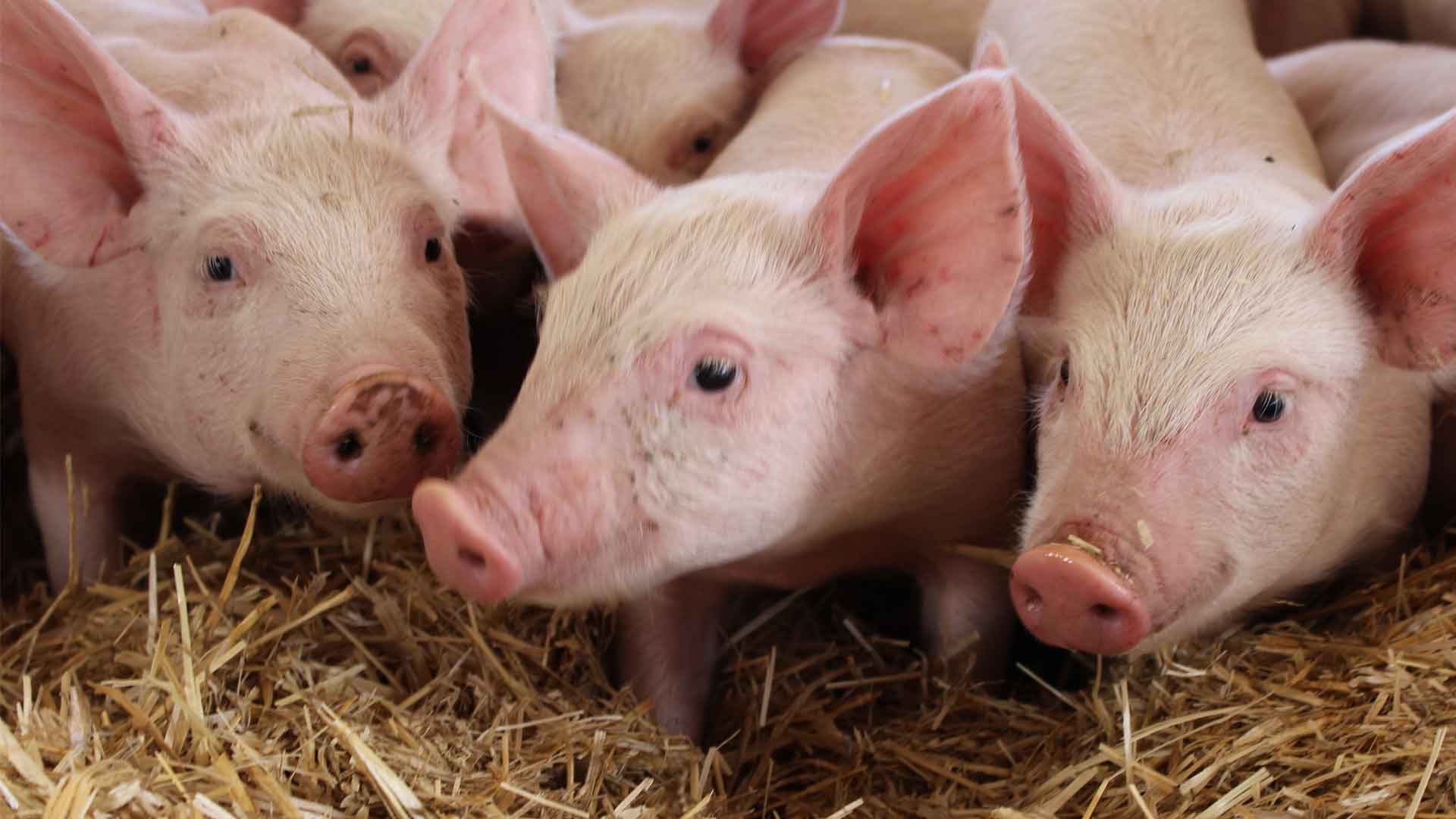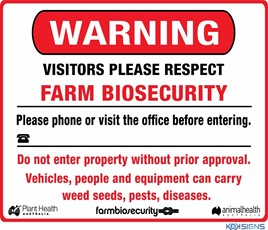
ASF – What is it & how to plan for business continuity
Wednesday, 1 December 2021
African Swine Fever and is a highly contagious and deadly disease, caused by a virus that can affect both domestic and feral pigs.
What is ASF?
African Swine Fever and is a highly contagious and deadly disease, caused by a virus that can affect both domestic and feral pigs. The first indicator of infection is often just dead pigs with some pigs showing clinical signs for up to 7-10 days before they die. For the more virulent strains, mortalities are 100% for all ages of pigs and any that do survive will carry the virus for months or their lifetime. There are no vaccines available to protect against ASF and there are no treatments.
Typical clinical signs for ASF are like those for several diseases that are in Australian herds including acute outbreaks of pleuropneumonia and Glasser’s disease amongst others. The clinical signs of ASF include:
- High fever,
- Listlessness,
- Weakness,
- Increased pulse rate,
- Lack of appetite, diarrhoea, vomiting,
- Coughing, difficulty breathing and
- Abortions in pregnant sows
Many sources can contribute to the spread of ASF including
- Ticks (soft bodied ticks to be more specific and there are two species in Australia);
- Direct contact with other pigs;
- Contaminated liquids and feed;
- Contaminated meat, and
- Feed trucks, vehicles or people moving between high-risk areas
Successful ASF eradication programmes generally require the destruction of all domestic pigs in an affected area. If the feral pig population in the area is or becomes sick, ASF will persist in the area with the feral pigs serving as an infection source for the domestic pig population. Also, if ticks are involved in the infection cycle the virus can be kept viable in ticks for months or years, even without on-going exposure to sick pigs.
Thorough cleaning/decontaminating and then disinfecting is effective against ASF but it does depend on which disinfectant is used. One Stroke Environ, Virkon S, and bleach are effective disinfectants while weak acids and alcohol-based disinfectants won’t be effective against ASF.
The ASF virus is also very stable across a range of temperatures and pH and is extremely persistent in processed meats such as Parma hams, salami, and sausage casing for many months.
What can we do?
Biosecurity
We need to have an umbrella mentality when it comes to biosecurity, making sure it covers all things and that all parts are considered. A simple way of doing this is to just consider the different components of the farm; specifically:
- Staff and visitors
- Incoming pigs and pig meat
- Pests and feral animals
- Feed and other consumables
- Dead pig disposal
Biosecurity procedures for staff and visitors:
- Implement a policy that does not permit staff to own or work with other pigs or hunt feral pigs.
- Control entry to the farm by well-maintained perimeter fences, a locked gate, a communication system at the gate (buzzer, alarm and two-way speaker system) and signs with instructions for entry for visitors. Perimeter fences should also be effective against the feral animal population in the location.
- Demarcate dirty off-farm areas with barriers such as a locked door or shower, where people must undress before entering the clean farm areas and putting on farm provided clothes
- Ensuring clean protective outerwear (correct sizes), hand wash, boot cleaning stations and disinfectants are available
- Routinely clean clothing and footwear
- Provision of convenient toilets and ample hot water for showers and washing
- Limit visitors to farm; discourage unnecessary visitors that will have contact with your pigs.
- Maintain a visitor register which visitors must sign stating:
- That they have showered and changed clothes since their last exposure to pigs;
- That they have not returned from overseas travel (especially in countries where ASF has been reported) within the last seven days (check with your vet for the “pig- free” interval required);
- The dates and locations of their last contact with pigs.);
- Make visitors shower in and shower out or at least wash their hands and scrub fingernails;
- Disinfect farm vehicles moving in and out of the farm;
- Keeping non-farm vehicles outside of farm or at least their drivers inside their vehicles, and
- Train staff so that they understand the concepts of biosecurity and what will or won’t work. Without adequate training and an understanding of the concepts, mistakes will be made, and shortcuts taken, jeopardising the health status of herds.

Biosecurity procedures for incoming pigs and pig meat:
- Quarantine any incoming pigs for at least one month, and
- No pork meat products (pork, ham, bacon, sausages, salami, etc.) to be brought onto farm site. (Conduct spot checks at lunchtime to check this is happening).
Biosecurity procedures for pests and feral animals:
- Use barriers to prevent feral pigs or intruders from coming into contact with your pigs.
- Implement and maintain a strong insecticide and rodenticide program.
- Treat the Dead Pit as a source of contamination. Dispose of dead pigs and afterbirth securely i.e. so that the pit cannot be approached/raided by feral animals or intruders.
Biosecurity procedures for feed and consumables
- Control everything that goes into your farm and sheds.
- Source your feed from reputable sources. The US Pork Checkoff Program has released a helpful Feed Ingredient Safety Sheet (that can be downloaded from the link below) which provides a decision tree and discussion points to consider when assessing the risks associated with supplier and feed ingredient safety https://www.swinehealth.org/wp-content/uploads/2018/09/Feed-Ingredient-Safety.pdf
- Organise feed delivery procedures so that feed trucks do not enter farm site
- Ensure deliveries of consumables, medications etc., are either delivered off-site to a secure receptacle/location or pick them up yourselves;
- Follow other generally accepted biosecurity practices, and
- Keep your facility clean at all times.
Biosecurity on farm should not have to be “heightened” or “tightened”; we need to keep it at a high level all the time because we really don’t know what’s around the corner and by the time we put “higher” procedures in place, it may already be too late.
Herd Information
Why is herd information important and what information do you need? In an EAD outbreak everyone is under a great deal of pressure and very stressed; being prepared with the information that regulators will need, streamline any official processes and assist with your business continuity. Australia has a series of documents which detail the response when an Emergency Animal Disease (EAD) outbreak occurs. These documents are known as the Australian Veterinary Emergency Plan (AUSVETPLAN). AUSVETPLAN contains the nationally-agreed approach for the response to EAD incidents in Australia. Many of the exotic pig diseases including ASF have a specific manual which details the response for that particular disease.
The herd information is vital because if you’re not prepared you may have decisions vital to your business made for you. Making sure that you have all the necessary herd information in enough detail and on hand will assist in getting back to business as usual. Much of the information you will need will already be present in your APIQ® Manual. The information you will require is:
- The address of your farm including geographical co-ordinates (APIQ® Manual)
- Pig movements per week
- Production figures
- Weekly, 3,4- or 5-week batch system
- Number of sows mated, sows farrowed, piglets born, pigs weaned, pig movements on farm, pig movements between sites etc.
- The address and contact details of you and all your staff (APIQ® Manual)
- The address and contact details of all contractors including the dates when they were last on farm (dates should be in the visitors’ book; APIQ®Manual for details)
- The address and contact details of all farm visitors (dates should be in the visitors’ book)
- The address and contact details of all suppliers (APIQ® Manual)
- The address and contact details of all your pig buyers (APIQ® Manual)
- Travel routes of all vehicles to and from farm including stock prime movers and trailers, stockfeed trucks, all tankers, farm vehicles (cars, trucks, tractors and motorbikes), staff vehicles.
- Dead pig disposal procedures
- Effluent disposal procedures
- Weekly feed consumption and water usage
The last piece of information that you should have, is the length of time that your farm could manage (without animal welfare becoming an issue) without pig movements off farm i.e. if a livestock standstill is called today, how long could you manage the pig flow, with not moving pigs off to slaughter or to another site, before your pigs’ welfare would be compromised. This length of time will be different for different farms but any forward preparation that you can do works in your business’ favour.
All this information is important as the first thing that will happen in an outbreak of ASF or another EAD, is a livestock standstill will be imposed. The initial stock standstill will be 72 hours long, regardless of the disease. Farms need to have plans in place to handle these 72 hours with no pigs out, no feed in. Contingencies after that time will depend on movement permits etc. issued by the regulators managing the outbreak. You want these decisions to take account of what is important to your farm, so the information (in sufficient detail) that you put together is very important.
After this initial 72 hour stock standstill, the period of time that the ongoing livestock standstill will be imposed depends on the species of animals affected, the disease, the area and how many farms are affected. The area affected by a standstill will depend on the size and nature of the disease outbreak. It could range from a single region to an entire state or multiple states. A livestock standstill for pigs means all pig transport to and from farms, saleyards, abattoirs etc. will stop in that area for a certain period of time. During a standstill, when a potential problem is identified for a particular farm e.g. overcrowding, lack of feed, the regulators involved in managing that area will draw up plans to manage the problem for that farm. If the relevant herd information is available, this will ensure that those developing the management plan have the most up-to-date information which will streamline problem management.
Your veterinarian will be able to assist you with any further information concerning EAD responses and diagnoses. Useful websites to visit include:
https://animalhealthaustralia.com.au/our-publications/ausvetplan-manuals-and-documents/
http://www.agriculture.gov.au/pests-diseases-weeds/animal/asf
https://australianpork.com.au/?s=African+Swine+Fever

